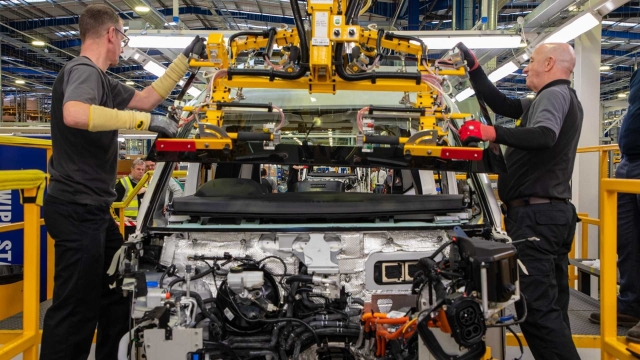
The Road Ahead: Exploring the World of Heavy Vehicle Manufacturing and Supply

In the ever-evolving landscape of transportation, heavy vehicle manufacturing and supply play a vital role in shaping the infrastructure of countries around the world. From trucks to buses, construction vehicles to agricultural machinery, the industry encompasses a wide array of vehicles designed for heavy-duty tasks. The intricate processes involved in producing these vehicles require a combination of advanced technology, skilled labor, and strategic supply chain management to meet the demands of various sectors. As we look ahead into the future of heavy vehicle manufacturing and supply, it is evident that innovation and sustainability will be key drivers in propelling the industry forward.
History of Heavy Vehicle Manufacturing
The origins of heavy vehicle manufacturing can be traced back to the late 19th century when the first steam-powered trucks and buses were produced. These early vehicles laid the foundation for the development of modern heavy trucks and commercial vehicles that are now essential for transporting goods and people around the world.
As the automotive industry grew, so did the manufacturing of heavy vehicles. The early 20th century saw major advancements in technology and production processes, leading to the mass production of trucks, buses, and specialized heavy equipment. Companies such as Ford, Mack, and Freightliner became synonymous with heavy vehicle manufacturing during this era.
The post-World War II period marked a significant expansion in heavy vehicle manufacturing, with innovations in design, materials, and fuel efficiency. The rise of global trade further fueled the demand for heavy vehicles, prompting manufacturers to constantly update their product offerings to meet the evolving needs of industries and consumers.
Challenges in the Industry
One of the main challenges faced in heavy vehicle manufacturing and supply is the volatility of raw material prices. Fluctuations in the prices of steel, aluminum, and other essential materials can significantly impact production costs, leading to challenges in maintaining profit margins and pricing competitiveness in the market.
Another significant challenge is regulatory compliance. The heavy vehicle industry is subject to a myriad of regulations and standards governing areas such as emissions, safety, and vehicle performance. Ensuring full compliance with these regulations can be complex and costly, requiring constant monitoring and adjustments to production processes.
Furthermore, the industry faces challenges related to technological advancements. As the demand for more fuel-efficient and environmentally-friendly vehicles grows, manufacturers must continuously invest in research and development to stay competitive. Keeping up with rapid technological changes while balancing costs and innovation is a continual challenge in the heavy vehicle manufacturing sector.
Future Trends
The future of heavy vehicle manufacturing and supply is poised for significant advancements. Technological innovation is set to revolutionize the industry, with the integration of automation and artificial intelligence leading the way. This digital transformation will not only enhance efficiency in production processes but also improve safety standards across the board.
Moreover, sustainability is becoming a key focus within the heavy vehicle manufacturing sector. With the industry accounting for a substantial portion of global emissions, there is a growing emphasis on developing eco-friendly solutions. The shift towards electric vehicles and alternative fuel sources is gaining momentum, driving manufacturers to adapt their practices to align with more environmentally conscious approaches.
Explore leading semi trailer options
Additionally, the concept of smart logistics is gaining traction, reshaping the way heavy vehicles are managed and maintained. Real-time data analytics and IoT connectivity are enabling companies to optimize routes, monitor vehicle performance, and streamline supply chain operations. As this trend continues to evolve, we can expect to see a more interconnected and efficient heavy vehicle ecosystem in the years to come.



